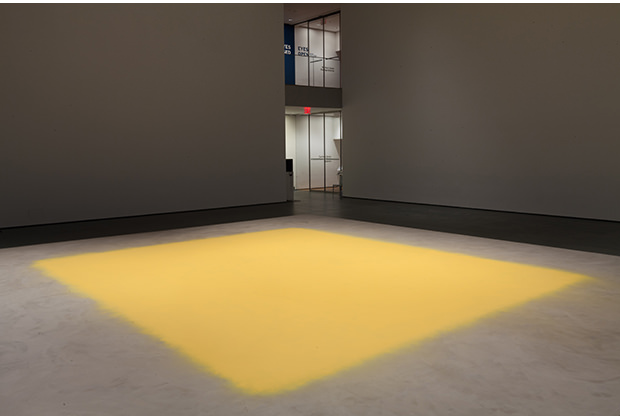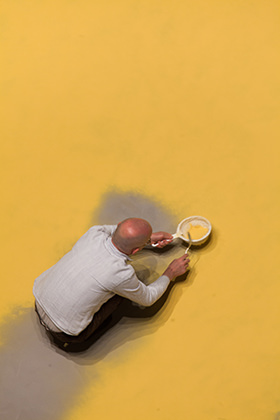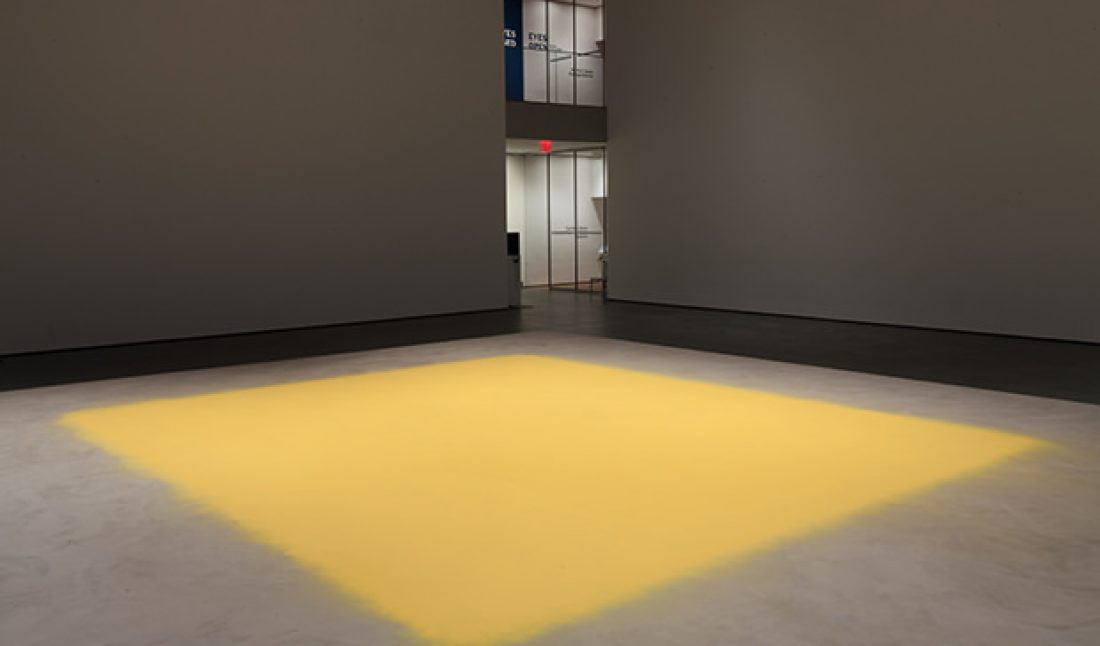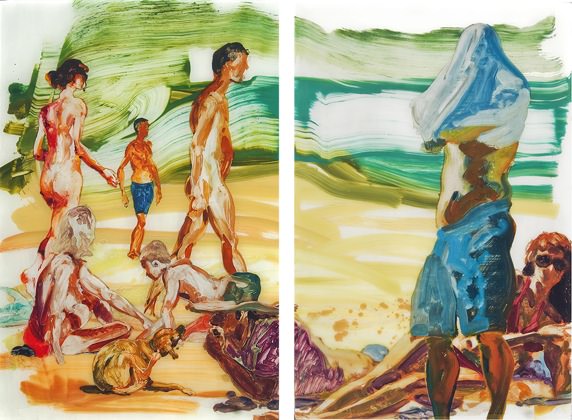The ethereal German minimalist Wolfgang Laib has played with materials gathered from the natural elements since the 1970s, creating sculptures and installations best known for their meditative and ritualistic processes. This month, Laib has taken over the Museum of Modern Art atrium with his much-anticipated installation Pollen from Hazelnut, an 18 by 21-foot expanse of dense, yellow hue tailored to the space.
For his biggest pollen field to date, Laib gradually sieved the pollen directly onto the floor, creating a carpet of radiant color that conjures notions of time, labor, and ritual. The hazelnut pollen used for the piece has been gathered from the environment around his home and studio in Germany since the mid-1990s, a quantity that has accumulated to the equivalent of the 18 glass jars he will use to store the pollen when the exhibition ends. With hazelnut buds flowering for just four to six weeks in the spring the pollen is collected in a slow and solitary ceremony, characteristic of Laib who describes his way of working as “something which I do for hours and hours and day and days.” His use of pollen is a soulful nod to its role as “the beginning of life,” an idea that can be attributed to his background in medicine and the daily confrontation of human mortality that came hand in hand with his work in hospitals. Laib’s use of pollen, a substance that has the potential to be as potent as it is fragile, is a vibrant celebration of life.

And for those who fear an early onset of spring allergies when visiting the installation, do not fear – there is no interaction with the pollen itself as it remains undisturbed due to its thick and sticky consistency, enabling all to enjoy Laib’s luminous yellow field.
Laib was born in 1950 in Southern Germany, where he lives and works to this day. Laib studied medicine in Tübingen, completing his doctor’s degree in 1974 and the following year embarked upon making art. Throughout his career he has studied Sanskrit, philosophy and religion, especially Buddhism and Jainism, and his art seeks to embody Eastern and Western cultural references and traditions. His pollen fields have been exhibited across the world.











